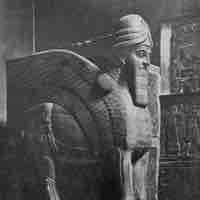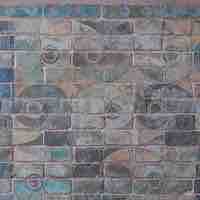Chapter 3
Art of the Ancient Near East
By Boundless

Sumer was an ancient Chalcolithic civilization that saw its artistic styles change throughout different periods in its history.
The invention of the potter's wheel in the fourth millennium BCE led to several stylistic shifts and varieties in form of Mesopotamian ceramics.
While the purposes that Mesopotamian sculpture served remained relatively unchanged for 2000 years, the methods of conveying those purposes varied greatly over time.
Domestic and public architecture in Mesopotamian cultures differed in relative simplicity and complexity. As time passed, public architecture grew to monumental heights.

The Assyrian and Neo-Assyrian capitals of Nimrud, Dur-Sharrukin, and Nineveh are known today for their ruins of great palaces and fortifications.
Assyrian architecture eventually emerged from the shadow of its predecessors to assume distinctive attributes, such as domes and diverse building materials, that set it apart from other political entities.

Assyrian artifacts consist of a variety of media and range in size from hand-held to monumental.

The art of the Persian Empire combined a diversity of styles from other cultures to create a unique Persian style.

The Achaemenid Empire was known for its eclectic style of art and architecture synthesized from many foreign influences between 550 and 330 BCE.